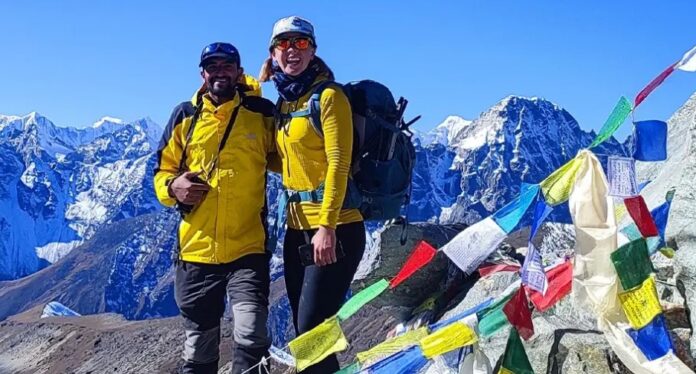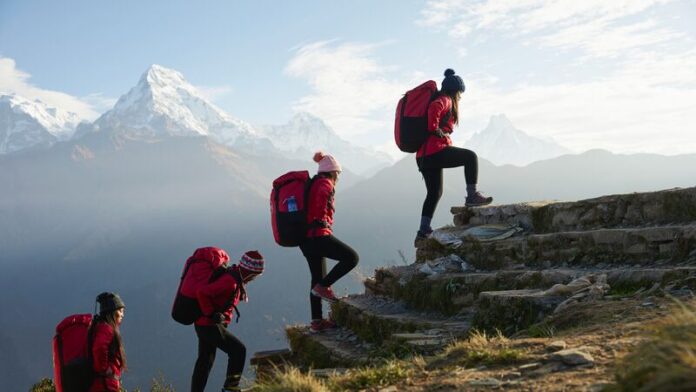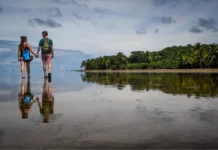What is Trekking?
Trekking refers to a long and challenging journey on foot, typically in a rural or wilderness setting. It can involve hiking through rugged terrain, crossing mountains and valleys, and camping overnight in the wilderness. Trekkers typically carry all of their gear and supplies with them and may be required to navigate using maps and compasses. It is a popular activity for people who enjoy outdoor adventure and physical exertion. Today, we shall thoroughly read about trekking in Nepal along with your fitness levels. So be focused and read carefully!
Why Nepal?
People trek to Nepal for a variety of reasons, including the opportunity to experience the country’s natural beauty, culture, and history. The Himalayas, which run through Nepal, offer some of the most spectacular mountain scenery in the world, and trekkers can hike through remote villages and see firsthand the traditional way of life of the Sherpa and other ethnic groups. Many people also trek in Nepal for the physical challenge and the sense of accomplishment that comes with reaching high altitudes. Additionally, many people are attracted to the spiritual aspects of trekking in Nepal, as the country is home to many sacred mountains and temples.
What should be the level of fitness?
To trek in Nepal, it is important to have a good level of fitness and be able to hike for several hours at a time with a backpack. It is also helpful to have some experience hiking on rugged terrain. However, the exact level of fitness required will depend on the specific trek you plan to do, as some treks are more strenuous than others. It is always recommended to consult with a doctor and do some training before embarking on a trek in Nepal.
Benefits of trekking
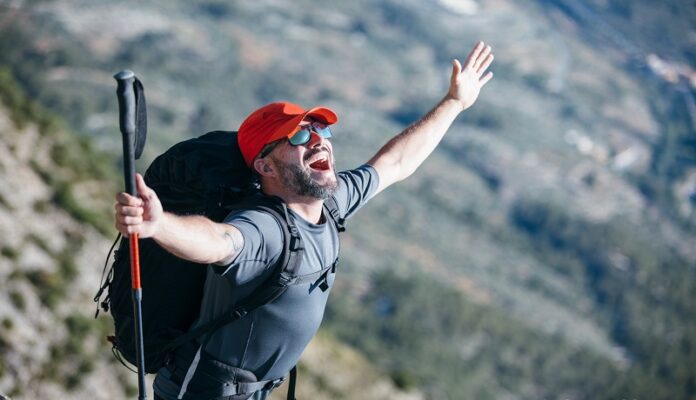
Trekking offers a variety of benefits, both physical and mental. Physically, trekking can improve cardiovascular fitness, increase muscle strength and flexibility, and aid in weight management. Mentally, trekking can reduce stress and anxiety, improve mood and self-esteem, and increase focus and concentration. Also, trekking can provide an opportunity to connect with nature, experience different cultures, and challenge oneself physically and mentally.
Dangers
There are several dangers associated with trekking, including:
Altitude sickness
This can occur when trekkers ascend to high altitudes too quickly, leading to symptoms such as headaches, nausea, and shortness of breath.
Hypothermia
This can occur when trekkers are exposed to cold temperatures, wet conditions, and high winds.
Dehydration
This can occur when trekkers do not drink enough water and can lead to heat stroke, fatigue, and other health problems.
Wounds
Trekkers can be at risk of damages such as sprains, anxieties, and ruptures from falls or descending on rough landscapes.
Weather
Unpredictable weather conditions can make trekking dangerous, especially in areas prone to storms or heavy rain.
Wildlife
Trekking through wilderness areas can put you in danger of wild animal attacks, it’s important to know about the animals that are common in the area you’ll be trekking in and how to protect yourself from them.
Getting lost
Trekkers can get lost if they lose their way on unfamiliar trails, particularly in low visibility conditions.
Natural Disasters
In some areas, trekkers could be at risk of natural disasters like landslides, flash floods, and earthquakes.
It is always important to be prepared, know the trail and weather conditions, and be aware of the risks.
Tips for trekkers
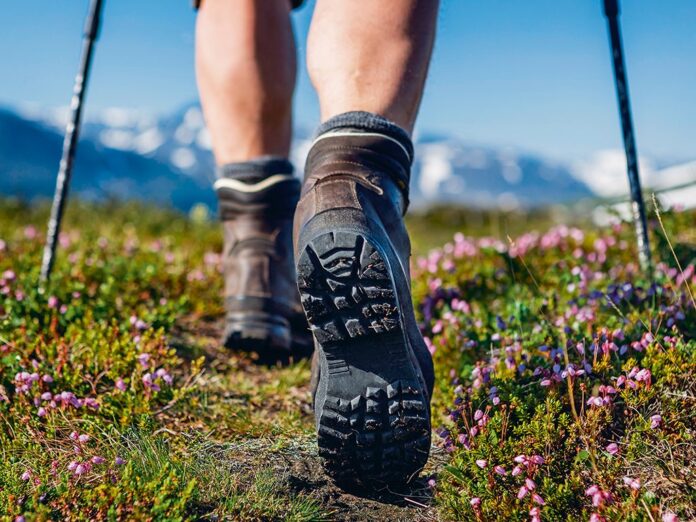
Plan ahead
Research the trail, weather conditions, and necessary gear.
Pack essentials
Bring enough food, water, first aid supplies, and appropriate clothing.
Stay on the trail
Stick to designated hiking paths to avoid damaging the environment and reduce the risk of getting lost.
Be mindful of your nearby areas
Keep an eye out for dangers such as loose stones or abrupt drop-offs.
Be set for changing climate circumstances
Carry additional coatings, rain equipment, and sunscreen.
Maintain a controlled pace
Start slow and take periodic intervals to bypass fatigue.
Know your limits
If you feel tired, take a break or turn back.
Leave no trace
Pack out all trash and leave the area as you found it.
Let someone know your plans
It’s a good idea to let someone know your itinerary and expected return time so they can call for help if you don’t return.
Have fun
Trekking is a great way to experience nature and challenge yourself, so remember to enjoy the experience!
Is trekking good for you?
Trekking can be beneficial for physical and mental health. It can increase skeletal and muscular power, aerobic endurance, stability, and vision. Furthermore, spending time outdoors and exercising regularly can assist in reducing anxiety and enhance life quality. It is important to consult your doctor before starting any new exercise regimen, especially if you have any pre-existing medical conditions.
Best Trekking Locations in Nepal
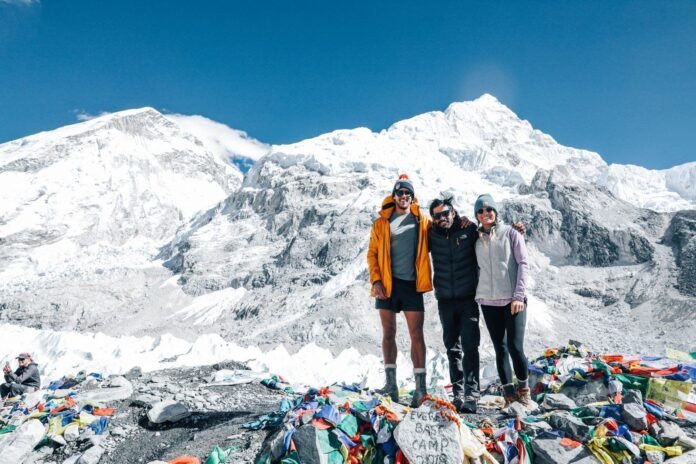
Some of the best treks in Nepal include:
- Everest Base Camp Trek
- Annapurna Circuit Trek
- Langtang Valley Trek
- Manaslu Circuit Trek
- Upper Mustang Trek
- Dhaulagiri Circuit Trek
- Rara Lake Trek
- Ghorepani Poon Hill Trek
- Kanchanjunga Base Camp Trek
- Makalu Base Camp Trek
These treks offer a variety of experiences, from the stunning mountain views and cultural encounters of the Everest Base Camp Trek to the remote and off-the-beaten-path trekking of the Upper Mustang Trek. It’s important to note that some of these treks are more strenuous and require a higher level of fitness and experience than others.
Is trekking for everyone?
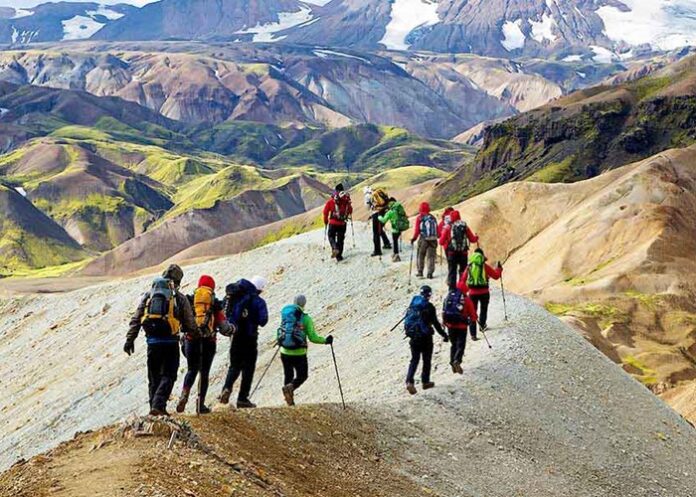
Trekking can be enjoyed by people of all ages and fitness levels, but it does require a certain level of physical fitness and preparation. It is important to consult with a doctor before undertaking any physically demanding activity and to make sure you have the proper gear and training. Additionally, some treks may be more challenging or require more technical skills than others, so it is important to choose a trek that is appropriate for your experience level.
This was all for today, I hope you enjoyed the article. Trekking is an activity that you must experience once.
